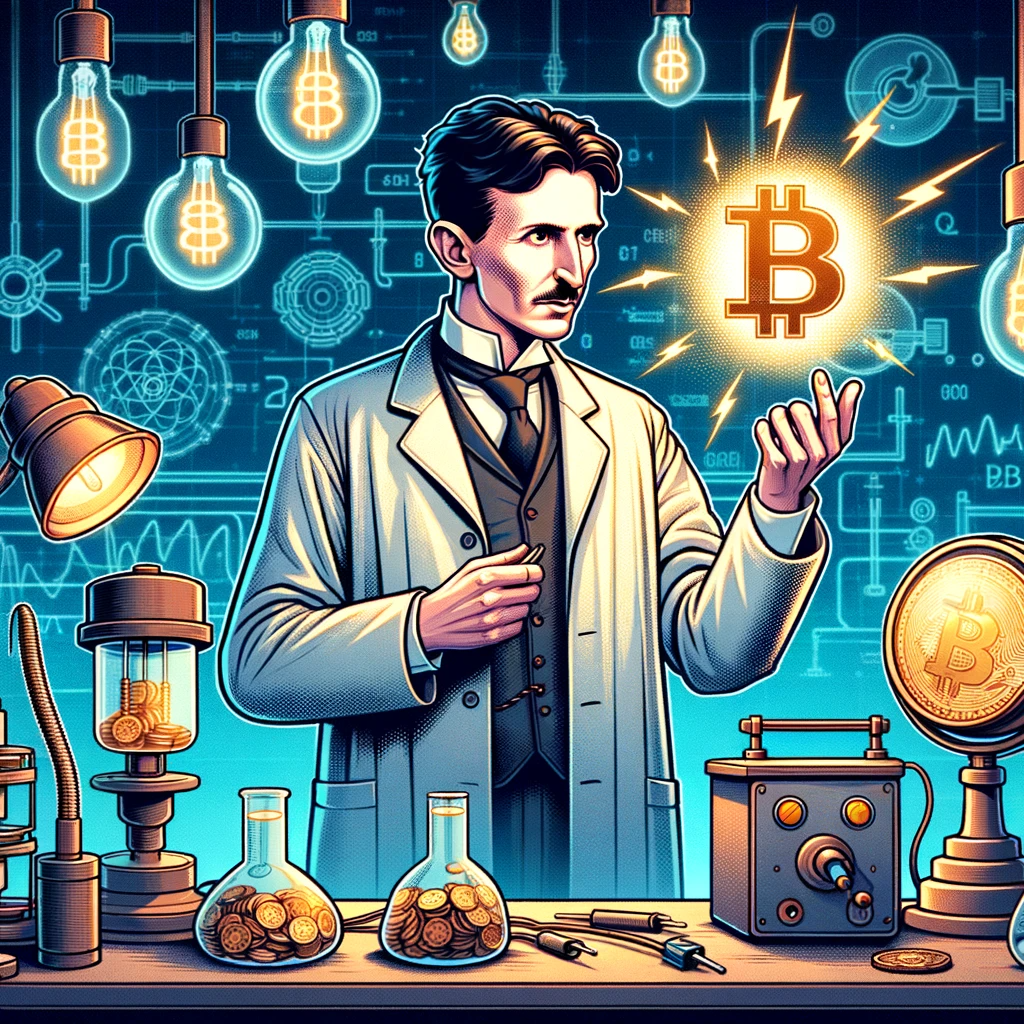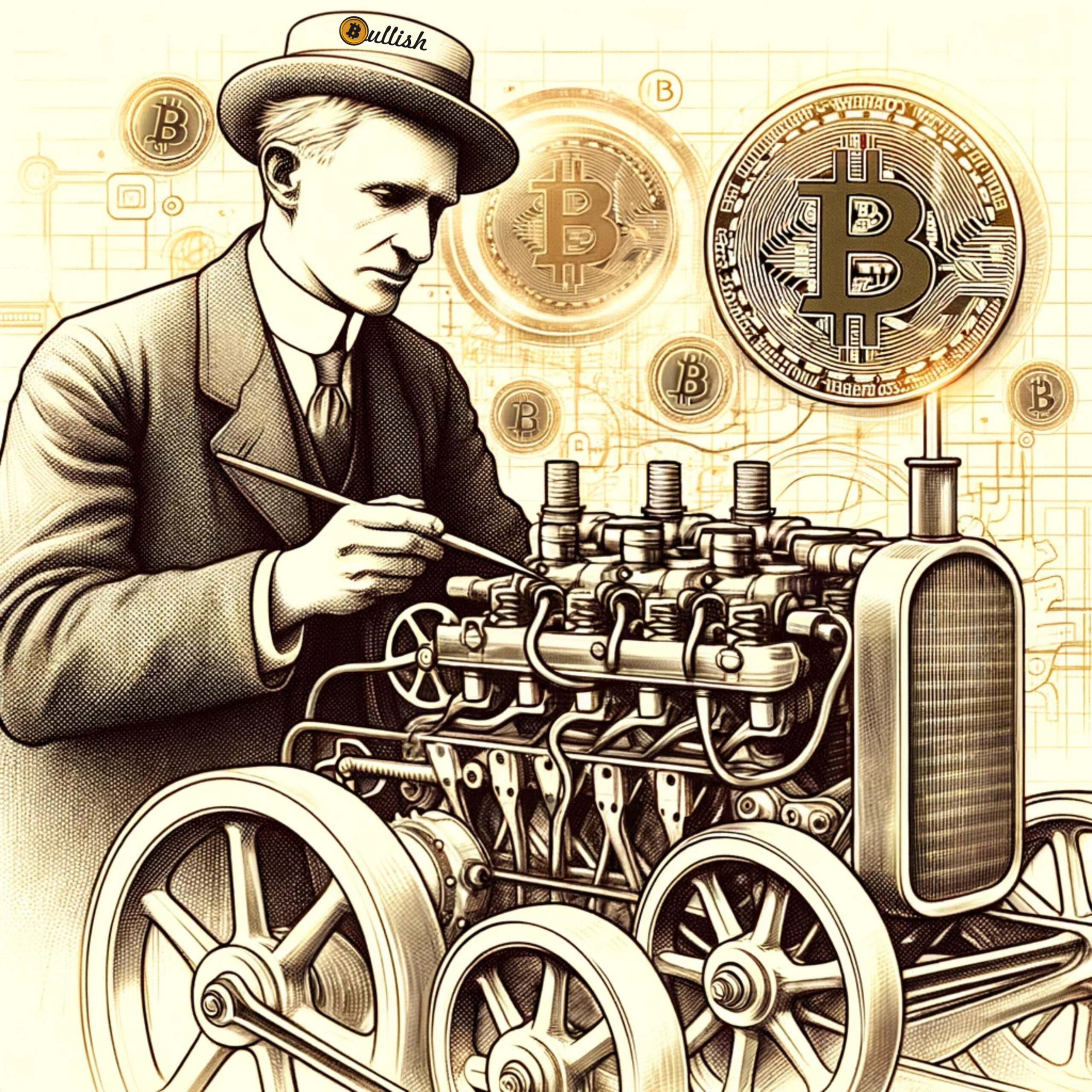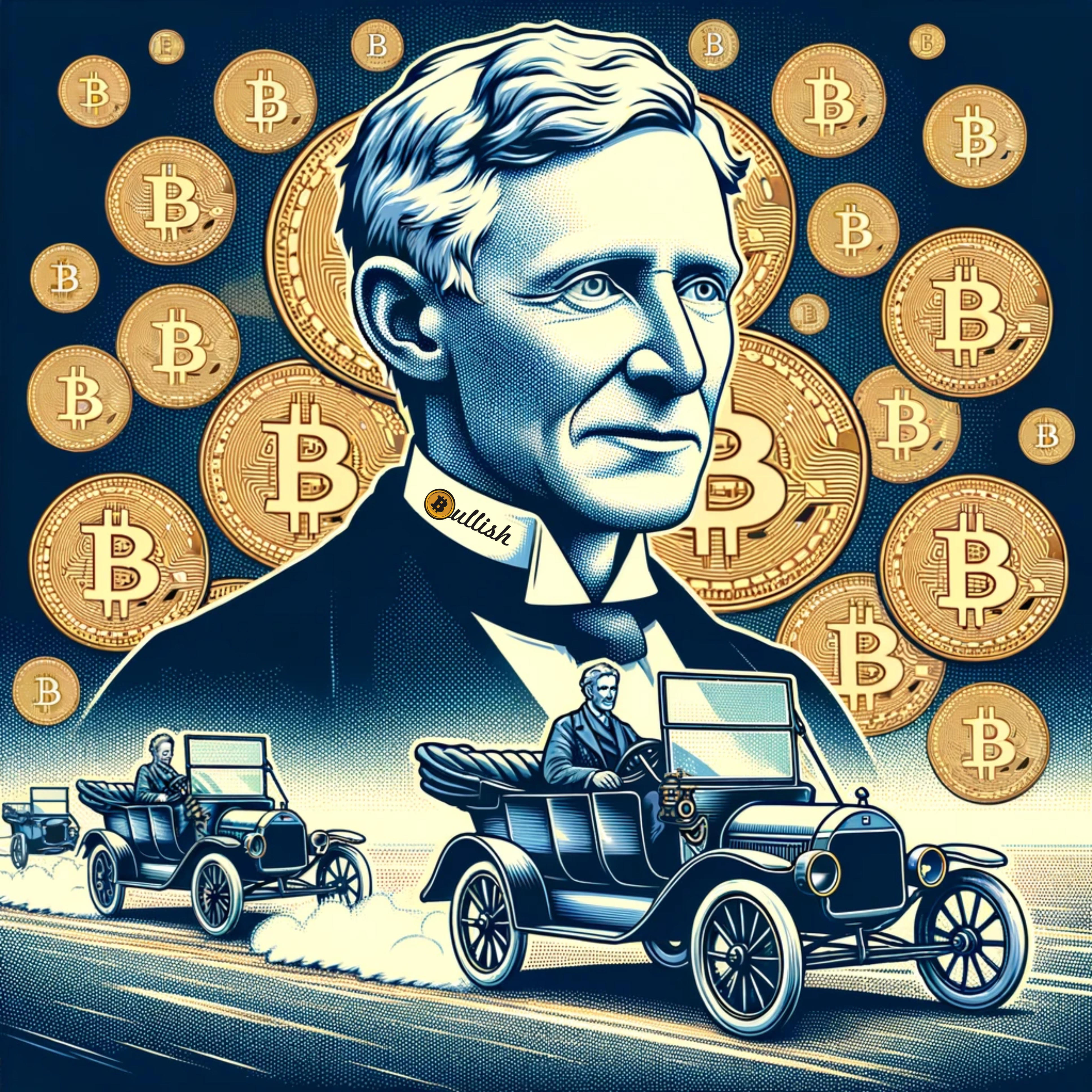Introduction
The dawn of the 20th century witnessed groundbreaking strides in industrial and technological advancements, primarily led by Henry Ford in manufacturing and Nikola Tesla in electrical engineering. While Ford revolutionized the automotive industry with his assembly line production, Tesla explored the untapped potentials of electricity and wireless communication. Their ideas, though distinct in their domains, both revolved around the transformative power of energy and information. Fast forward to the 21st century, an intriguing synthesis of their visions emerges in the form of Bitcoin, a decentralized digital currency. This article navigates through the ideological and technological confluence of Ford and Tesla’s legacies within the Bitcoin network, illustrating how their separate paths in history interweave in the modern era of digital currency and blockchain technology.

Section 1: Henry Ford’s Economic Overhaul – Currency of Energy
This section focuses on Henry Ford’s visionary concept of an “energy currency.” Beyond his achievements in automotive manufacturing, Ford proposed a radical economic model where the value of currency was tied to energy output, challenging the gold standard and advocating for a decentralized financial system.
Section 2: Nikola Tesla’s Predictions – Intelligent Machines and Energy Wars
Here, we explore Nikola Tesla’s futuristic predictions about intelligent machines, or “telautomatons.” Tesla envisioned a world where these advanced machines would harness and control energy, engaging in contests of intelligence and efficiency, a testament to his life’s work in understanding and manipulating invisible forces.
Section 3: The Bitcoin Network – A Synergy of Energy and Information
The final section discusses the emergence of Bitcoin, highlighting how it symbolizes the amalgamation of Ford and Tesla’s ideas. Bitcoin’s reliance on energy-intensive mining and its autonomous, decentralized network reflect Ford’s concept of an energy-based economy and Tesla’s vision of intelligent, independent machines.

Ford's Visionary Economic Model: The Energy-Based Currency
Henry Ford, the pioneering automaker behind the Model T and the assembly line, also harbored revolutionary ideas in the field of economics. His vision extended far beyond automobiles, envisioning a radical shift in the global economic paradigm with the introduction of an “energy currency.” This concept was a striking departure from the conventional gold standard. Ford proposed a system where the value of currency would be intrinsically linked to the output of energy, essentially quantifying money with the most fundamental resource in the industrial age: energy. This innovative idea envisioned currency not just as a passive medium of exchange but as a dynamic measure of industrial and economic productivity.
Ford’s energy currency concept was not merely an economic theory but also a bold statement against the existing financial systems dominated by centralized banking monopolies. He saw this new form of currency as a way to democratize economic power, distributing it more equitably across society based on the actual production of tangible value, i.e., energy. This vision was a direct challenge to the existing structures of financial control and a step towards a more decentralized and fair economic system. However, the technological and societal infrastructure in Ford’s time was not advanced enough to support such a radical transformation, leaving his vision unfulfilled during his lifetime.

Tesla's Forethought: Intelligent Machines and the Dynamics of Energy
Nikola Tesla, a visionary inventor known for his groundbreaking work in electricity and wireless communication, held futuristic ideas that were far ahead of his time. Tesla envisaged a world where machines would not only assist humans but potentially match or even surpass human intellect. He conceptualized “telautomatons” – a term he coined for remotely controlled machines. These machines, as Tesla imagined, would not be mere tools but intelligent entities capable of performing complex tasks, engaging in commerce, and participating in what he termed “electric warfare.” These ideas were a natural extension of his extensive work in harnessing and manipulating invisible energy forces, including electricity and electromagnetic fields.
Tesla’s predictions about intelligent machines were deeply rooted in his understanding of energy as the driving force behind all technological progress. He envisioned these machines as entities that could control and manipulate energy, thereby performing a variety of tasks with efficiency and intelligence. Tesla saw these telautomatons as more than mechanical constructs; they were embodiments of his lifelong pursuit to understand and master the unseen forces of nature. His foresight laid the groundwork for many modern technologies, and his concept of telautomatons foreshadowed the development of robotics, remote control technologies, and even aspects of artificial intelligence.

Bitcoin: A Confluence of Ford and Tesla's Ideals
Bitcoin, a 21st-century technological marvel, can be seen as the embodiment of the confluence of ideas from both Henry Ford and Nikola Tesla. At its core, Bitcoin operates as a decentralized digital currency, which aligns with Ford’s vision of an energy-backed monetary system. The process of Bitcoin mining, where computers around the world compete to solve complex cryptographic problems, mirrors Ford’s concept of linking the value of currency to productive, energy-consuming activity. The miners, in essence, convert electrical energy into digital assets, thereby creating a modern version of Ford’s energy currency.
Additionally, the decentralized and autonomous nature of the Bitcoin network echoes Tesla’s vision of intelligent, self-operating machines. In the Bitcoin ecosystem, miners can be likened to Tesla’s telautomatons, where each mining unit independently contributes to the network’s overall intelligence and efficiency. This parallel extends to the blockchain technology underpinning Bitcoin, which functions as a global ledger maintained not by any central authority but by a collective of machines distributed across the globe. This aspect of Bitcoin reflects Tesla’s ideas about the power and potential of decentralized, energy-driven systems.

The Intersection of Ideologies and Future Implications
The fusion of Ford and Tesla’s ideologies within Bitcoin presents a unique synthesis of technological and ideological concepts. Bitcoin effectively embodies Ford’s critique of centralized banking systems and his proposition for a currency that is rooted in real, quantifiable energy. Concurrently, it manifests Tesla’s foresight about the role of intelligent machines in society, particularly in economic and transactional contexts.
Despite facing criticism for its high energy consumption, Bitcoin, when viewed through the lenses of Ford and Tesla, represents a significant investment in the future of secure and stable monetary systems. The energy expended in the mining process is not merely a cost but an integral part of ensuring the network’s security and integrity. This energy-intensive process serves to make each bitcoin both valuable and resistant to fraud, aligning with Ford’s vision of an energy-based value system and Tesla’s pursuit of harnessing energy in innovative ways.

Continuing the Legacy of Visionaries
Bitcoin stands as a practical application of Ford and Tesla’s combined philosophies, using energy as a currency foundation and machine intelligence for financial system maintenance. It prompts us to rethink the nature of money and its role in a connected world, seeing energy as a cornerstone for a fairer economic future. As Bitcoin evolves, it continues to intersect the legacies of Ford and Tesla, showcasing the potential of human innovation.
“The present is theirs; the future, for which I really worked, is mine.”
– Nikola Tesla
“The only real security that a man can have in this world is a reserve of knowledge, experience, and ability.”
– Henry Ford
Related Articles

Henry Ford
Henry Ford: Henry Ford, the revolutionary industrialist who founded the Ford Motor Company and fathered modern assembly lines, was also a critical thinker when it came to the economic systems of his time. He was famously critical of the centralized banking system,...

Bitcoin vs. Gold
Why has gold been used as currency? Gold has been used as a form of currency for thousands of years because of its unique properties. One of the main reasons is that it’s scarce and difficult to mine, making it a valuable commodity. Additionally, gold is durable and...
You’re Not Too Late
I think every person who takes time to learn about Bitcoin has the same initial thought, “If I had only invested in bitcoin a few years ago, I’d be rich.” While this is likely true, this shouldn’t stop you from investing in it now. The next thought that goes through...
Bitcoin & Freedom Go Hand in Hand
Freedom is a Responsibility and a Moral Obligation Owning Bitcoin allows you to be in control of your own financial affairs, similar to the responsibility of maintaining freedom. However, it is important to keep in mind that this responsibility also requires taking...
The Humanitarian Side of Bitcoin
Many Venezuelans have fled the country due to its ongoing economic crisis and authoritarian government. The high inflation rate, which is expected to surpass 1 million percent, has made the local currency nearly worthless. As a result, over 3 million people have left...








